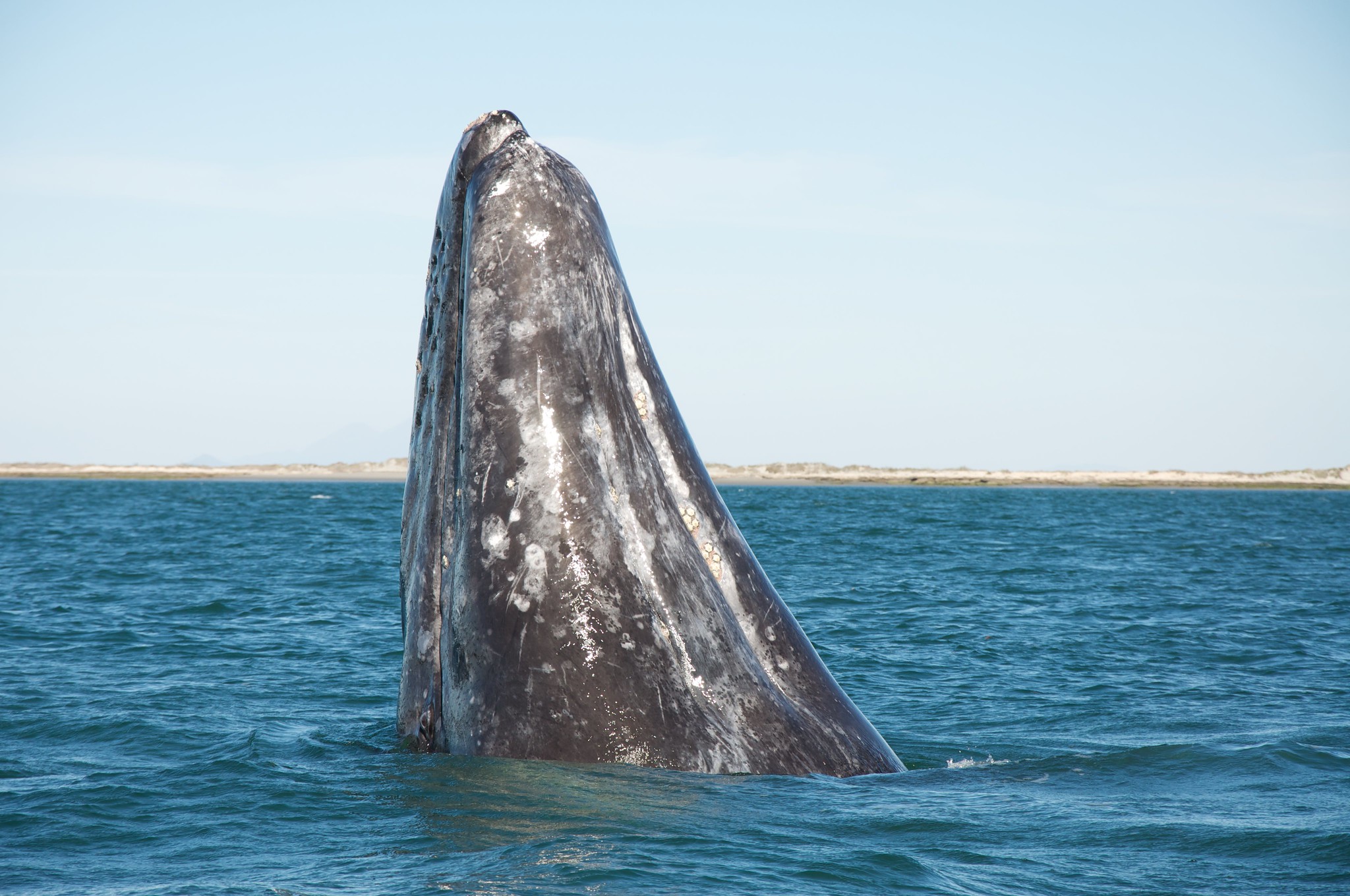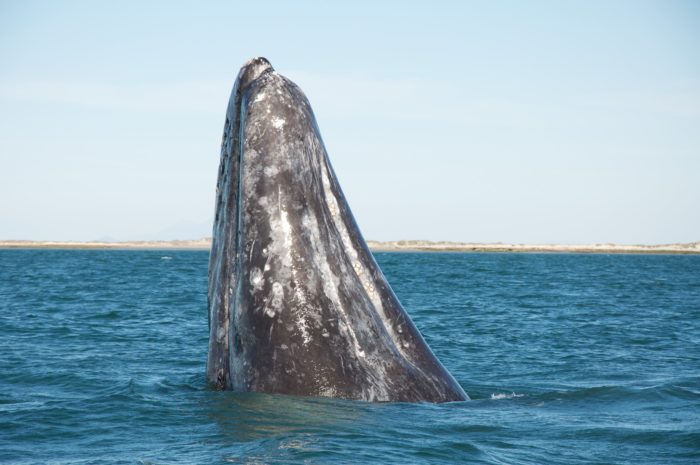
Creature Feature: Gray whale

Gray whale. Photo credit: Sam Beebe
The world’s longest migrating mammal and one of the world’s 13 species of great whales, this week’s Creature Feature is none other than the gray whale!
Appearance
The gray whale is characterized by its patchy discoloration, lack of distinct dorsal fin, ten to twelve knobs along the dorsal ridge of the tail, and presence of barnacles and whale lice (hitchhiking, parasitic crustaceans) on the skin. Their pectoral fins are large and paddle-shaped, with tail flukes that can span up to 10 feet across. Their eyes are located directly above the corners of their mouths, and have two blowholes at the top of their heads. A mature adult can reach nearly 50 feet in length and weigh approximately 90,000 pounds; adult females tend to be larger than adult males.
Diet & Life History
Gray whales are baleen whales, meaning they don’t have teeth but mesh like plates of keratin (a protein that forms our hair and fingernails) through which they filter food. Gray whales eat benthic amphipods and fish and hunt by taking sediment from the sea floor into their mouths and filtering food through their baleen, leaving behind a trail of mud. Killer whales are the only known predators of the gray whale, though sharks may occasionally hunt sick or vulnerable individuals.
Gray whales are considered mature between six and 12 years old, and a pregnancy lasts around 13 months. Females give birth to a single calf that can be 14 to 16 feet long and weigh nearly a ton. Scientists aren’t sure what the average lifespan of the species is, but the maximum observed lifespan may be well into the 70s.
Habitat
Gray whales live nearshore in the North Pacific Ocean and make the longest annual migration of any mammal on earth. During the summer months, gray whales can be found in the Bering and Chukchi Seas, as well as off the coast of Alaska, Oregon, Washington state, and British Columbia.
As temperatures begin to drop in the fall, gray whales begin their migration to Baja California Sur in Mexico where the spend the winter mating and raising their young. Annually since 1967, along the west coast of the United States, volunteers and scientists observe gray whales during peak migration periods to better understand population health and composition. This means visitors to all of America’s west coast marine sanctuaries (Channel Islands, Cordell Bank, Greater Farallones, Monterey Bay, and Olympic Coast) may have the opportunity to see gray whales during the fall and spring months. Their long migrations and curious nature make this species a popular one for whale watching excursions, especially in Mexico and California.
Conservation
Gray whales historically existed in the Atlantic and Pacific oceans, but commercial whaling led to their extinction in the Atlantic. This species was vulnerable to whaling due to the high volume of oil each individual could produce paired with their close proximity to the shore. In the 1980s, the Eastern North Pacific population of gray whales was considered endangered, but multiple policy efforts, including those of the Marine Mammal Protection Act and Endangered Species Act, led to the species’ recovery. In fact, when the gray whale was removed from the endangered species list in 1994, it was the first marine mammal species ever considered recovered since the Endangered Species Act was enacted in 1972. The Western North Pacific population is still considered endangered but is generally outside of the United States’ jurisdiction.
Gray whales remain threatened by entanglement, vessel strikes, ocean noise, and whale watching disturbances. In the first quarter of 2019, NOAA declared an unusual mortality event (UME) due to elevated levels of gray whale strandings along the California coast. The cause of these strandings remains unknown.
